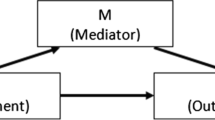Abstract
Crosstalk plays a critical role in prevention research to promote purposeful behavior change through randomized controlled trials. However, two challenges prevent researchers from assessing crosstalk between subjects in the intervention and the control conditions that may contaminate an intervention trial. First, it is very hard if not impossible to identify who in the intervention group have talked with whom in the control group; therefore the crosstalk effect cannot be statistically evaluated. Second no method is readily available to quantify crosstalk even if we know who has talked with whom. To overcome the challenges, we devised the random-pairing bootstrap (RPB) method based on statistical principles and adapted the mutual information (MI) technique from the information sciences. The established RPB method provides a novel approach for researchers to identify participants in the intervention and the control groups who might have talked with each other; the MI itself is an analytical method capable of quantifying both linear and nonlinear relationships on a variable between two groups of subjects who might have experienced information exchange. An MI measure therefore provides evidence supporting the effect from crosstalk on a target variable with data generated through RPB. To establish the PRB-MI methodology, we first conducted a systematic test with simulated data. We then analyzed empirical data from a randomized controlled trial (n=1360) funded by the National Institute of Health. Analytical results with simulated data indicate that RBP-MI method can effectively detect a known crosstalk effect with different effect sizes. Analytical results with empirical data show that effects from within-group crosstalk are greater than those of between-group crosstalk, which is within our expectation. These findings suggest the validity and utility of the RBP-MI method in behavioral intervention research. Further research is needed to improve the method.
Access this chapter
Tax calculation will be finalised at checkout
Purchases are for personal use only
Preview
Unable to display preview. Download preview PDF.
Similar content being viewed by others
References
Stanton, B., Cole, M., Galbraith, J., Li, X., Pendleton, S., Cottrel, L., Marshall, S., Wu, Y., Kaljee, L.: A randomized trial of a parent intervention: Parents can make a difference in long-term adolescent risk behaviors, perceptions and knowledge. Archives of Pedi. Adol. Med. 158, 947–955 (2004)
Kegeles, S.M., Hays, R.B., Coates, T.J.: The Mpowerment Project: A community-level HIV prevention intervention for young gay men. Am. J. of Public Health 86, 1129–1136 (1996)
Howe, A., Keogh-Brown, M., Miles, S., Bachmann, M.: Expert consensus on contamination in educational trials elicited by a Delphi exercise. Med. Edu. 41, 196–204 (2007)
Torgerson, D.J.: Contamination in trials: is cluster randomisation the answer? BMJ 322, 355–357 (2001)
Fritz, K., McFarland, W., Wyrod, R., Chasakara, C., Makumbe, K., Chirowodza, A., et al.: Evaluation of a peer network-based sexual risk reduction intervention for men in beer halls in Zimbabwe: results from a randomized controlled trial. AIDS Behav. 15, 1732–1744 (2011)
Gottman, J.M.: Detecting cyclicity in social interaction. Psychological Bulletin 86, 338–348 (1979)
Keirse, N.C., Hanssens, M.: Control of error in randomized clinical trials. European J. Obst. Gyn. Reprod. Bio. 92, 67–74 (2000)
Lang, D.L., DiClemente, R.J., Hardin, J.W., Crosby, R.A., Salazar, L.F., Hertzberg, V.S.: Threats of cross-contamination on effects of a sexual risk reduction intervention: fact or fiction. Prev. Sci. 10, 270–275 (2009)
Gottman, J.M.: Marital Interaction: Experimental Investigations. Academic Press, New York (1979)
Gottman, J.M., Murray, J.D., Swanson, C.C., Tyson, R., Swanson, K.R.: The Mathematicals of Marriage: Dynamic Nonlinear Models. MIT Press, Cambridge (2002)
Guastello, S.J., Pincus, D., Gunderson, P.R.: Electrodermal arousal between participants in a conversation: nonlinear dynamics and linkage effects. Nonlinear Dynamics Psychol Life Sci. 10, 365–399 (2006)
Hartkamp, N., Schmitz, N.: Structures of introject and therapist-patient interaction in a single case study of inpatient psychotherapy. Psychotherapy Research 9, 199–215 (1999)
Nowak, A., Vallacher, P.R.: Dynamical Social Psychology. Guilford Press, New York (1998)
Shannon, C.E.: The mathematical theory of communication. Bell Syst. Techn. Journal 27, 379–423 (1948)
Chen, X., Stanton, B., Gomez, P., Lunn, S., Deveaux, L., Brathwaite, N., et al.: Effects on condom use of an HIV prevention programme 36 months postintervention: a cluster randomized controlled trial among Bahamian youth. Int J. STD AIDS 21(9), 622–630 (2010)
Chen, X., Lunn, S., Deveaux, L., Li, X., Brathwaite, N., Cottrell, L., et al.: A cluster randomized controlled trial of an adolescent HIV prevention program among Bahamian youth: effect at 12 months post-intervention. AIDS Behav. 13, 499–508 (2009)
Author information
Authors and Affiliations
Editor information
Editors and Affiliations
Rights and permissions
Copyright information
© 2014 Springer International Publishing Switzerland
About this paper
Cite this paper
Chen, X.(., Chen, DG. (2014). Mutual Information Technique in Assessing Crosstalk through a Random-Pairing Bootstrap Method. In: Kennedy, W.G., Agarwal, N., Yang, S.J. (eds) Social Computing, Behavioral-Cultural Modeling and Prediction. SBP 2014. Lecture Notes in Computer Science, vol 8393. Springer, Cham. https://doi.org/10.1007/978-3-319-05579-4_30
Download citation
DOI: https://doi.org/10.1007/978-3-319-05579-4_30
Publisher Name: Springer, Cham
Print ISBN: 978-3-319-05578-7
Online ISBN: 978-3-319-05579-4
eBook Packages: Computer ScienceComputer Science (R0)




